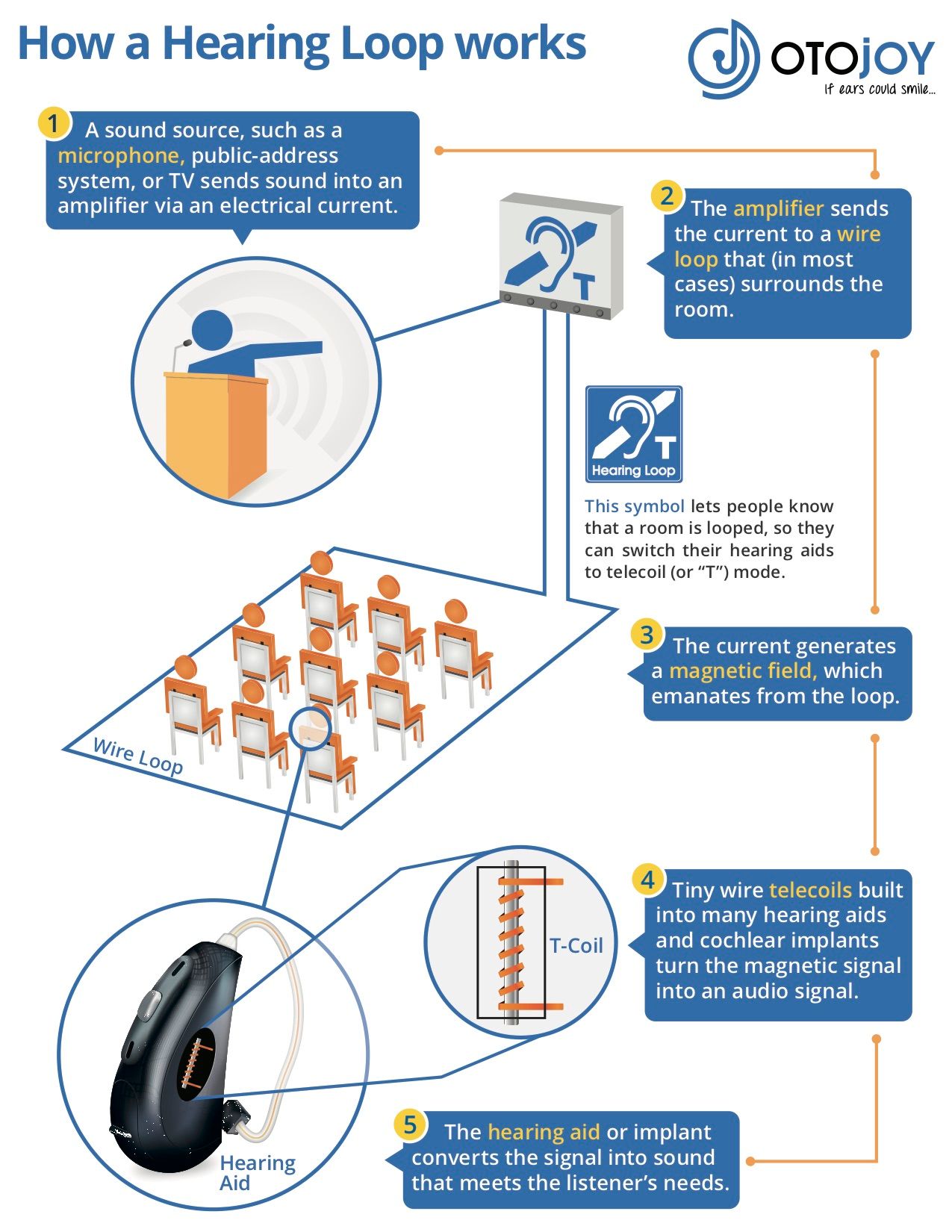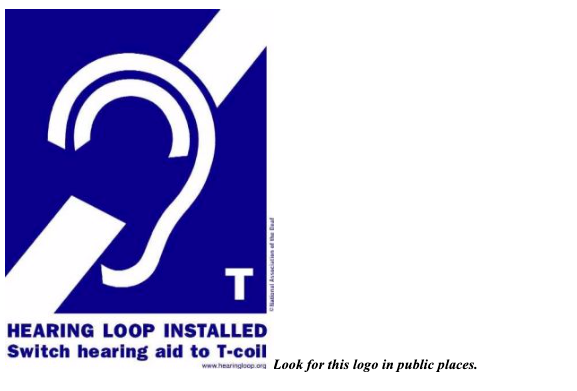Hearing Loops and T-Coils
What are TeleCoils /T-Coils?
Most hearing aids today, with the exception of a few models, have a built-in telecoil or offer it as an option. All cochlear implant processors made today have a telecoil. Telecoils are especially helpful to patients in environments where it is typically difficult to hear clearly. Once the patient is fit with their hearing device, they simply need to switch their hearing aid or cochlear implant to the T-Coil program. This will allow the patient to hear better in public spaces, allowing them to hear sound streamed directly into their hearing aids in venues where Loop Systems are installed.
“Hearing aid microphones only work for a relatively short distance,” Juliëtte Sterkens, hearing loop advocate for the Hearing Loss Association of America (HLAA), said. “But telecoils and hearing loops give people with hearing aids better hearing, even sometimes better than those with normal hearing.”
Hearing aids with a telecoil can make a dramatic difference in the user’s ability to hear clearly on the telephone, a noisy restaurant, at the theater, in meetings, while trying to navigate public transportation and in other challenging settings.
What are Hearing Loop Systems?
Hearing loops, or induction loops, or Audio Frequency Induction Loop Systems (AFILS), consist of a copper wire placed within a room, theater or counter which is connected via a special loop “drive” to a public address or sound system. This type of assistive listening system (ALS) transmits sound directly to a listener’s telecoil-enabled hearing aids or cochlear implants for improved clarity and understanding. Hearing loops deliver intelligible, distortion-free speech and sound in environments where distance, ambient noise, and challenging acoustics otherwise make listening and understanding with hearing aids and cochlear implants virtually impossible. Technically known as audio frequency induction loop systems (AFILS), hearing loops consist of a special amplifier and a copper wire that transmits sound via a magnetic field. Any hearing device with a manually accessible telecoil becomes a wireless receiver in the hearing loop.
Hearing loops work in any size venue or location, from a large auditorium to a taxi or an elevator. The Telecoil Imperative Telecoils provide many people with hearing loss what wheelchair ramps provide people with mobility challenges—access. Telecoils are an essential gateway to hearing aid compatible assistive listening for most people with hearing aids and cochlear implants. Telecoils receive the magnetic sound signal from a hearing loop and also enable listening via infrared (IR) and FM systems signals with the use of a neckloop.
Loop systems are available in venues such as concert halls, auditoriums, theaters, newly constructed or remodeled airports, mass transit stations, as well as churches, public libraries and healthcare facilities. Many hearing loop-accessible venues also are listed on the LoopAmerica website.
How Do Hearing Loop Systems Work (Visual)

How do I find hearing loop systems near me?

